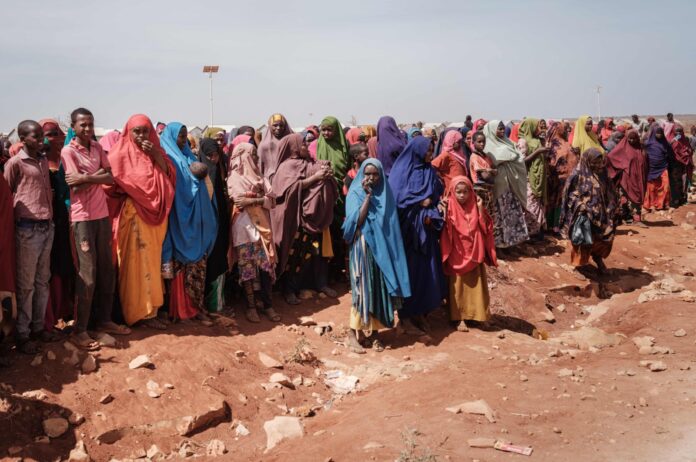Vast swathes of land stretching from southern Ethiopia to northern Kenya and Somalia are in the grip of a severe drought that has left 13 million people facing hunger.
Across these regions, where people eke out a living from mainly agro-pastoral activities, the three rainy seasons since the end of 2020 have been marked by low rainfall, exacerbated by a locust invasion that devastated crops between 2019 and 2021.
“The population of the Horn makes up only 4% of the global population, but it represents 20% of the population that is food insecure,” Michael Dunford, World Food Programme (WFP) regional director for eastern Africa, said earlier this month.
According to the U.N. agency, 5.7 million people need food aid in southern and southeastern Ethiopia, including half a million malnourished children and mothers.
In eastern and northern Kenya, where the president declared a state of national disaster in September because of the drought, another 2.8 million people need assistance.
In Somalia, the number of people classified as severely hungry could rise from 4.3 million to 4.6 million by May if urgent action is not taken. The authorities there declared a “state of humanitarian emergency” in November.
“Malnutrition has reached crisis levels,” said Victor Chinyama, a spokesperson for UNICEF in Somalia. “The time to act is now.”
“If you wait until things get worse or until famine is declared, it may be too late,” he warned.
In 2017, early humanitarian action prevented a famine in the troubled country. But in 2011, 260,000 people – half of them children under the age of six – died of hunger, partly because the international community did not act fast enough, according to the U.N.
Currently, the U.N.’s annual appeal for $1.46 billion (1.23 billion euros) for Somalia has scraped in just 2.3% of the target.
Beyond the direct and potentially deadly consequences on the people affected, the shortage of water and grazing land is a source of conflict, particularly among herders.
The drought also threatens the animal world. Cattle – an essential source of subsistence in the region – are dying en masse.
In Kenya alone, as many as 1.4 million livestock died in the final three months of 2021, according to the U.N.’s Food and Agriculture Organization.
“We are most definitely now sitting on the brink of catastrophe,” said Rein Paulsen, director of the FAO’s Office of Emergencies and Resilience. “We have a window to the middle of the year, to June, which is a very time-sensitive, narrow window for urgent actions to scale up to prevent a worst-case scenario.”
Wildlife is also at risk. In Kenya, there have been many cases of wild animals such as giraffes or antelopes perishing for lack of water and food, their carcasses rotting on barren scrubland.
In drought conditions, wild animals will leave their usual habitat in the hunt for water or food, often straying closer to developed areas. In central Kenya, big cats have attacked herds of livestock, while elephants or buffaloes have taken to grazing in farmland, angering the inhabitants.





